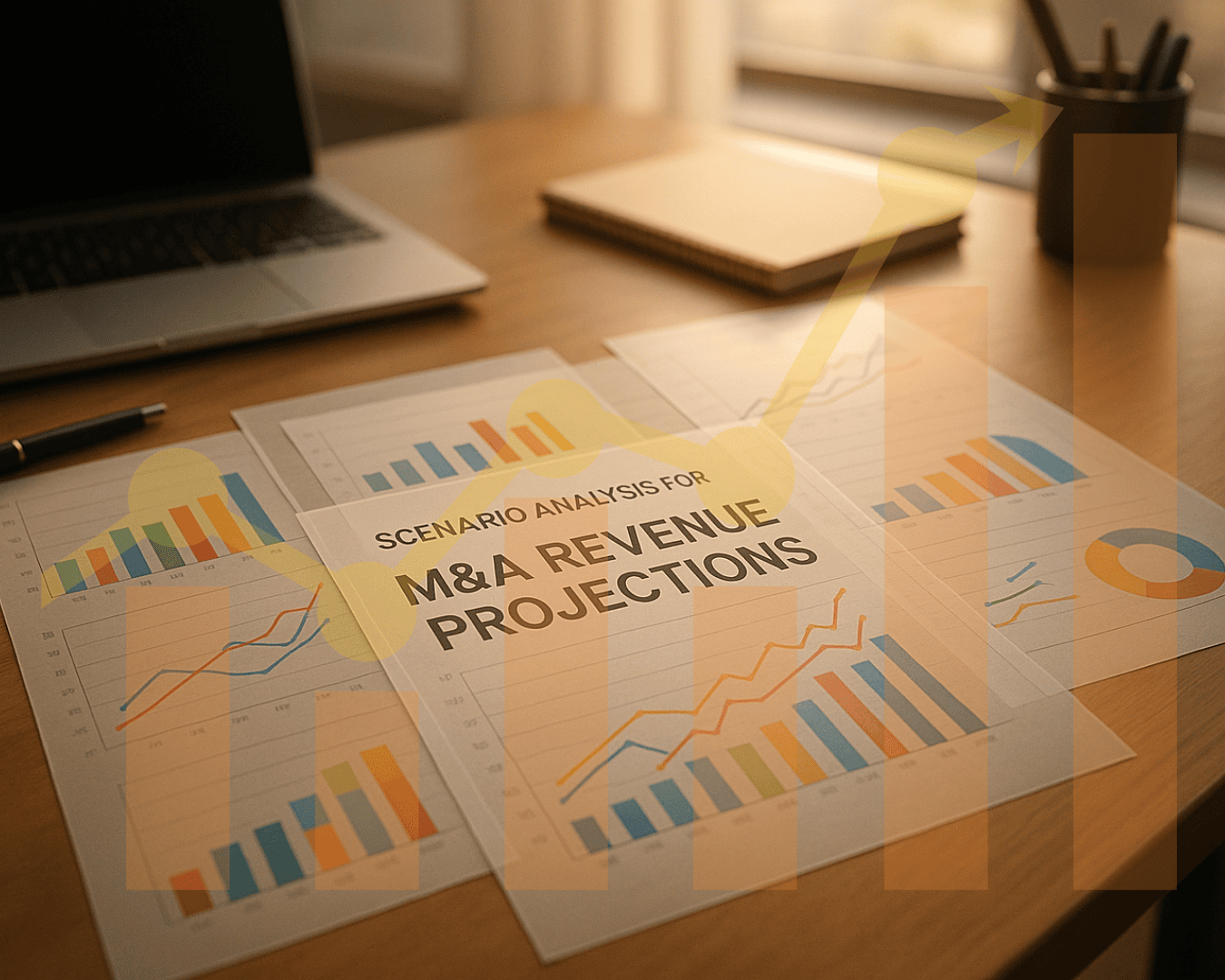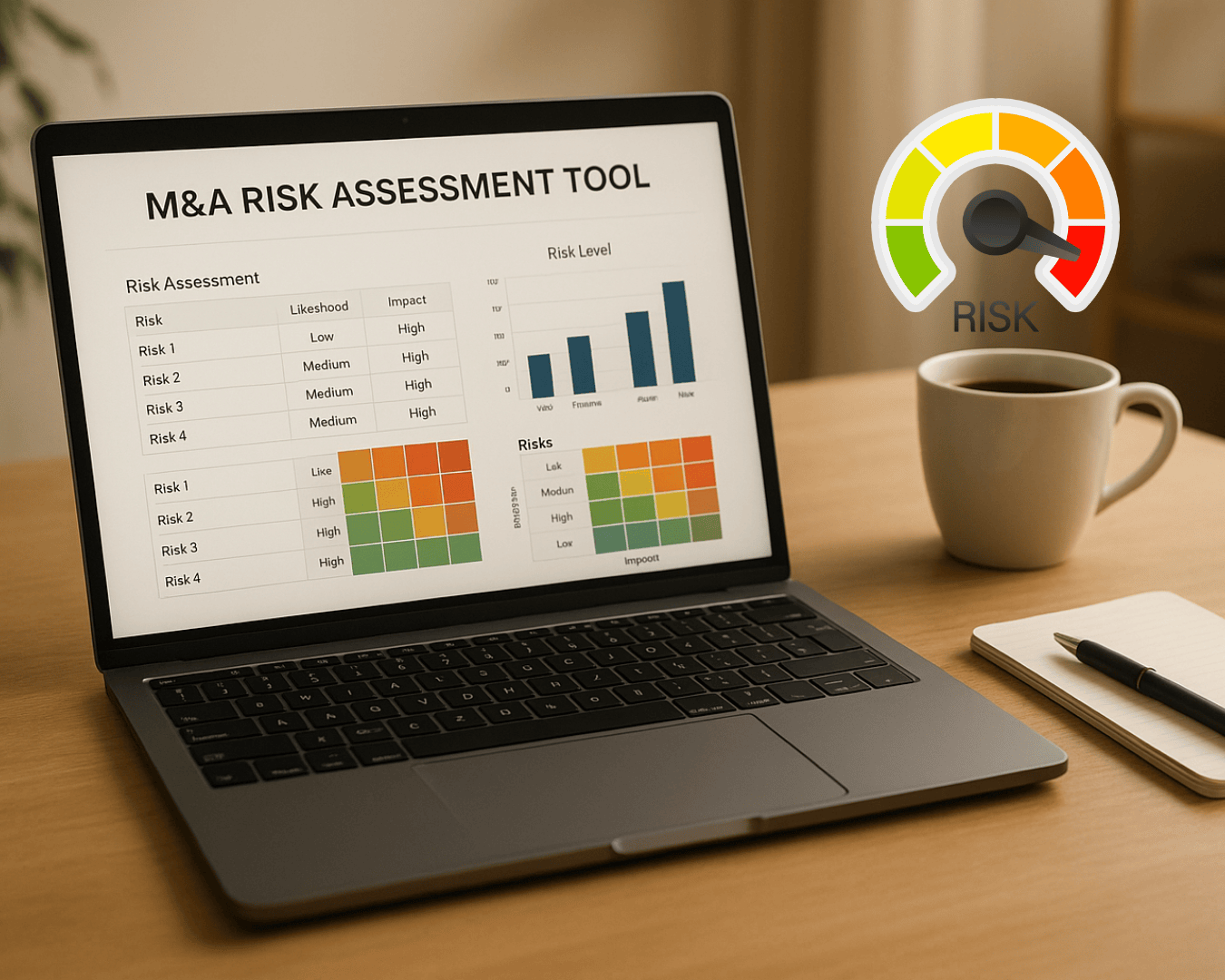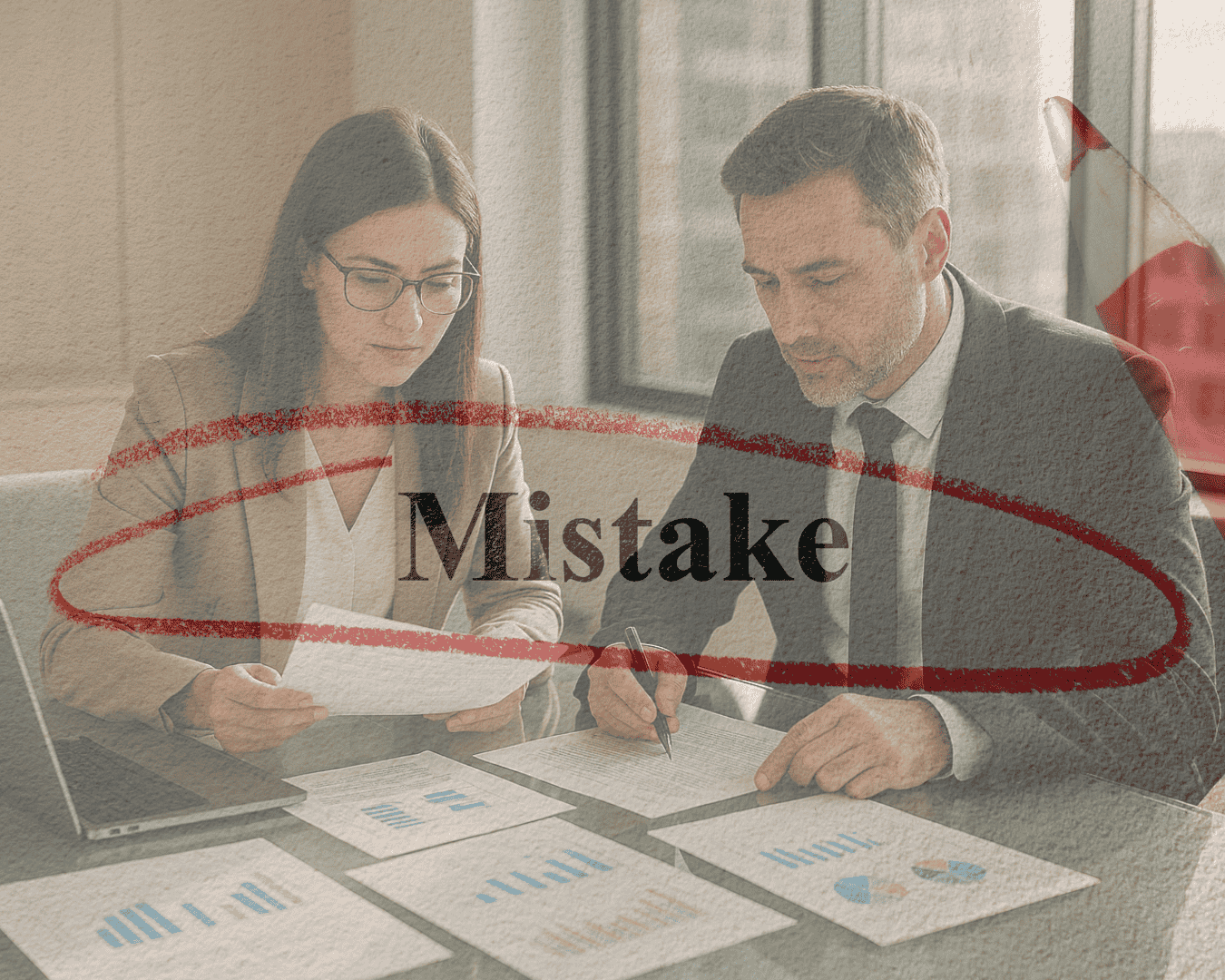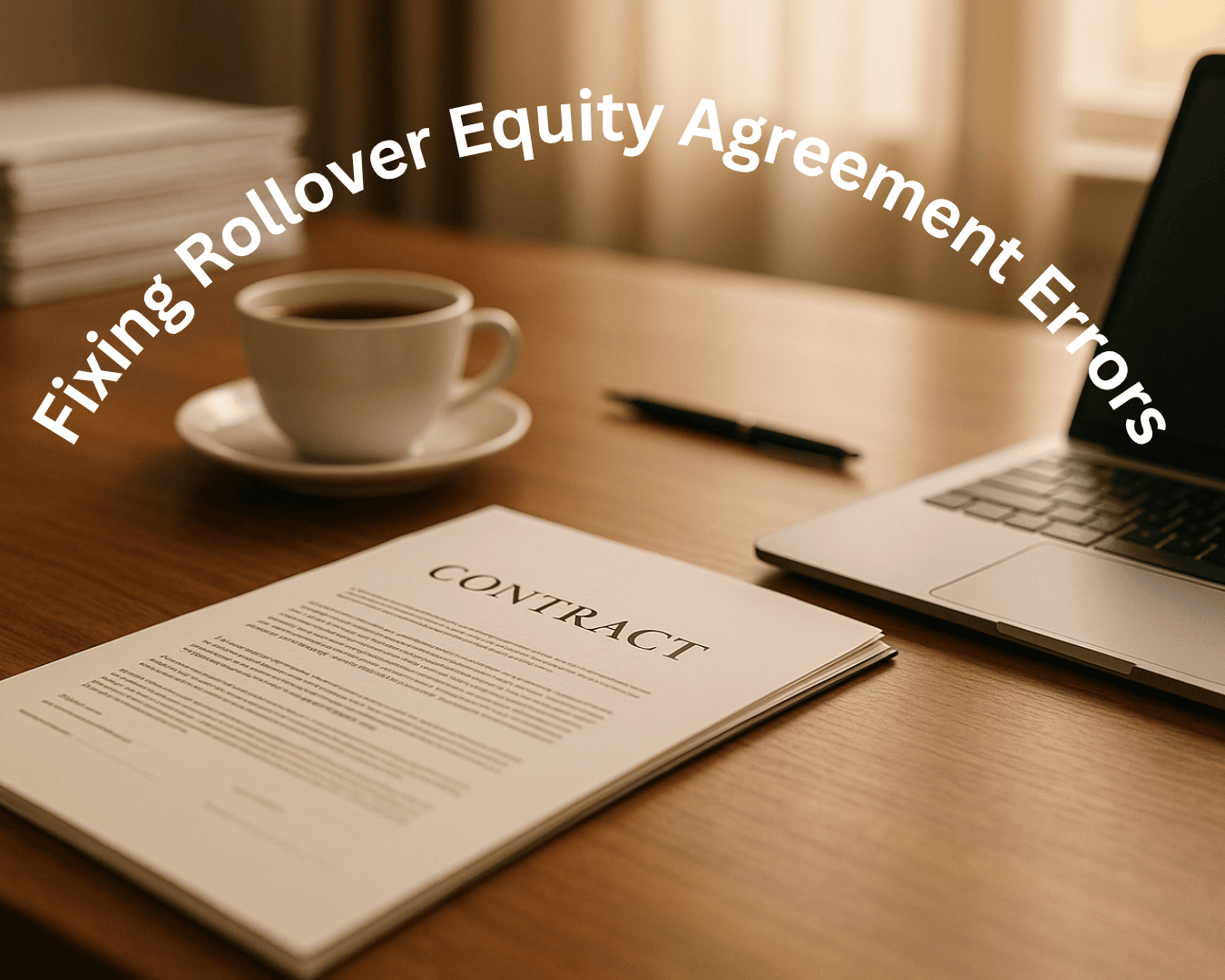Tax mistakes in M&A deals can cost you big - up to 10% of revenue in sales tax noncompliance alone. Whether you're buying or selling, failing to address tax liabilities early can derail even the most promising transactions. Here's what you need to know:
- Hidden liabilities like unpaid taxes, worker misclassification, and undocumented exemptions can snowball into major financial burdens.
- Transaction structure errors (e.g., asset vs. stock purchases) directly impact tax costs for buyers and sellers.
- State and local tax (SALT) issues often go unnoticed but can create unexpected obligations in multi-state operations.
- Purchase price allocation (PPA) mistakes can lead to IRS audits and missed tax benefits.
- Skipping expert help and tech tools during due diligence increases the risk of costly errors.
To avoid these pitfalls, prioritize thorough tax reviews, engage experienced advisors early, and leverage AI-powered platforms for better compliance. Addressing tax risks upfront ensures smoother deals and fewer surprises.
📢 Tax Due Diligence: Key Strategies for M&A Success⭐ from Online M&A Courses of "mnainstitute.com"
Tax Due Diligence Mistakes
Tax due diligence plays a critical role in the success of any M&A deal. Rushing through this process or neglecting a detailed review can lead to financial headaches down the road. When buyers and sellers fail to dig deep, they risk uncovering liabilities months or even years after the deal is closed. Let’s break down some of the key risks and challenges involved.
"Federal tax due diligence is not merely a step in the M&A process - it is a fundamental safeguard that protects the interests of both buyers and sellers." - Clark Nuber P.S.
This process is becoming even more essential as global M&A activity is projected to reach its highest levels in four years by 2025. With this uptick in deals, tax authorities are likely to ramp up their scrutiny, and compliance oversights could become all too common.
Hidden Tax Liabilities
Hidden tax liabilities can derail even the most promising transactions. For instance, unpaid taxes uncovered during a post-deal audit - such as overlooked quarterly payments or unremitted payroll taxes - can quickly snowball into significant financial burdens.
IRS disputes are another common pitfall. A company might be involved in ongoing audits or appeals that seem routine to management but could escalate into major liabilities, especially when multi-year examinations leave the final tax amounts unresolved.
Worker misclassification is a growing concern in today’s gig economy. Mislabeling employees as independent contractors can lead to unexpected back taxes, penalties, and state-level liabilities.
Similarly, poorly documented tax exemptions can backfire. If a business claims exemptions for sales, property, or income taxes without proper documentation, it could face full tax assessments along with penalties if those claims are challenged.
State and local tax (SALT) exposure is another area that often surprises buyers. Companies may unknowingly have nexus in states where they haven’t filed returns, leaving years of unfiled obligations. Sales tax liabilities can be particularly tricky for businesses operating across state lines without proper tracking systems in place.
Employee benefit plans are also a potential minefield. Issues with how benefits are administered or how fringe benefits are taxed can result in both tax liabilities and regulatory penalties.
Due Diligence Best Practices
To mitigate these risks, it’s essential to follow a few best practices. Start with a comprehensive review of historical tax filings. This means looking beyond the returns themselves to include supporting documents, correspondence with tax authorities, and any amendments or corrections that have been made.
Buyers should independently verify key tax positions rather than relying solely on the seller's representations. This involves recalculating liabilities, reviewing documentation, and ensuring that filed returns accurately reflect the company’s operations.
Engaging experienced tax advisors early in the process is another smart move. These professionals bring deep knowledge of tax laws, experience with similar transactions, and the ability to quantify exposures while helping to structure deals in a way that minimizes risk.
Building the right due diligence team is crucial. For example, if a company has significant sales tax exposure, including advisors with expertise in multi-state compliance is vital. Similarly, businesses with international operations need professionals who understand transfer pricing and foreign tax credit issues.
Lastly, reviewing the taxability of products and services is a must. This involves analyzing how the target company has handled tricky transactions, applied exemptions, and stayed compliant with current regulations.
Tax due diligence isn’t about checking boxes - it’s about digging deep. Each issue identified should lead to further investigation to ensure all related risks are fully understood and addressed before the deal is finalized. By taking a thorough and proactive approach, buyers and sellers can avoid costly surprises down the line.
Transaction Structure Classification Errors
Choosing the wrong transaction structure can lead to unnecessary tax costs. Deciding between an asset purchase and a stock purchase isn't just a legal formality - it directly affects how the IRS treats the deal and determines who shoulders the tax burden.
A common pitfall for dealmakers is focusing solely on the business side of a transaction without fully considering the tax consequences. This oversight can erode deal profitability if the structure doesn't align with the tax objectives of the parties involved.
Asset vs. Stock Purchase Tax Impacts
In an asset purchase, the buyer acquires specific assets and liabilities, gaining a cost basis in the purchased assets equal to the purchase price plus assumed liabilities. This structure provides a tax basis step-up, which allows buyers to claim higher depreciation deductions, potentially lowering future income taxes by a significant amount. For instance, buyers might secure tax deductions equating to as much as 25% of the difference between the purchase price and the target's tax basis. However, this structure often results in a heavier tax burden for sellers, as it can lead to double taxation.
In a stock purchase, the buyer acquires the target's stock and assumes all associated assets and liabilities. Unlike asset purchases, buyers in stock deals don't benefit from a stepped-up tax basis but may inherit valuable tax attributes such as net operating losses or tax credits. Sellers generally prefer stock purchases because they usually result in a single level of taxation at the shareholder level.
To summarize, asset purchases typically favor buyers due to depreciation benefits, while stock purchases are more advantageous for sellers because of single-level taxation. Understanding these differences is key to aligning the structure with the deal's goals.
Optimal Structuring Methods
Once the tax impacts are clear, structuring the transaction effectively becomes essential. By combining thorough tax due diligence with strategic structuring, parties can minimize future liabilities and maximize savings.
Start by performing a transaction cost analysis to identify extra costs and uncover opportunities for tax deductions. Tax professionals can model various scenarios, quantifying the tax implications of each structure to guide informed decision-making.
Additionally, review the target's tax attributes and potential liabilities. This step is especially important in stock purchases, as buyers inherit all tax issues tied to the target. Comprehensive due diligence ensures risks are identified and addressed before finalizing the deal.
"Tax due diligence serves as a critical lens through which we discover and quantify potential tax risks in M&A transactions. These findings often impact the deal structure, escrow holdbacks, indemnification, and determine what conditions are needed to resolve tax issues." - Bob Houston, Tax and M&A Leader
State and Local Tax Compliance Oversights
In M&A transactions, federal tax implications often take center stage, but state and local tax (SALT) compliance is frequently overlooked. This can lead to unforeseen liabilities, especially for businesses operating across multiple jurisdictions. When companies have operations, employees, or customers spread across different states, the complexity of varying tax rules and compliance requirements increases, making it easy to miss critical obligations. Addressing SALT compliance effectively requires a clear understanding of nexus and a solid compliance strategy.
Nexus and SALT Exposure Assessment
The concept of nexus lies at the heart of state tax obligations. It refers to the connection between a business and a state that establishes a tax liability. In simple terms, a state cannot impose taxes on a business unless nexus exists between them. Identifying where nexus applies is a key step in M&A tax planning.
There are several types of nexus to consider:
- Physical nexus arises when a business has a tangible presence in a state, such as offices, warehouses, employees, or equipment.
- Economic nexus can be triggered even without physical presence. After the Supreme Court's Wayfair decision, many states adopted thresholds like $100,000 in gross receipts or 200 transactions within the state to establish economic nexus.
- Affiliate and click-through nexus add further complexity. These can occur through third-party relationships, such as affiliates or referral arrangements, even if there is no direct physical presence.
States differ in how they measure these thresholds. For instance, some include all gross receipts, while others exclude resale sales, and the measurement periods also vary.
To navigate this complexity, a nexus study is invaluable. This analysis identifies where a business has nexus and quantifies potential exposure. By pinpointing these obligations, businesses can address liabilities proactively, ensuring that SALT compliance becomes a key part of M&A due diligence.
Tax Compliance Implementation
After identifying nexus exposure, the next step is implementing precise compliance measures to align with state and local tax rules. Just as with federal tax due diligence, thorough SALT reviews are essential to avoid costly surprises after a deal closes.
Key steps in SALT compliance include:
- Registration and accurate tax collection: Businesses must register for permits in all applicable jurisdictions and collect and remit sales tax on taxable sales.
- Maintaining detailed records: Accurate records of sales transactions, taxes collected, and exemption certificates are critical. These serve as the foundation for tax filings and provide essential documentation during audits.
- Using automated systems: Automated platforms can simplify compliance by handling tax calculations, tracking filing deadlines, and managing electronic submissions. This reduces the risk of errors and missed deadlines across multiple jurisdictions.
- Creating a compliance calendar: A centralized calendar helps track filing deadlines and frequencies, which vary by state, ensuring timely submissions.
- Conducting internal audits: Regular reviews of sales tax practices can uncover issues before they escalate. These audits should focus on calculation accuracy, filing completeness, and proper handling of exemptions.
- Resolving past non-compliance: For businesses with unresolved tax obligations, voluntary disclosure agreements (VDAs) offer a structured way to address historical liabilities, often with reduced penalties.
Finally, staying informed about changing tax rules is critical. States frequently update nexus standards, tax rates, and compliance procedures. Monitoring these updates across all relevant jurisdictions ensures ongoing compliance.
sbb-itb-a3ef7c1
Purchase Price Allocation and Tax Benefit Errors
When navigating due diligence and structuring a transaction, getting the purchase price allocation right and estimating tax benefits realistically is critical. These steps aren't just paperwork - they help avoid major tax headaches after the deal is done. Unfortunately, the excitement of closing can sometimes overshadow these crucial tax compliance tasks. Two common trouble spots? Misallocating the purchase price across asset classes and overestimating tax benefits. Both can lead to audits, penalties, and drawn-out disputes long after everyone thinks the deal is wrapped up.
The complexity here lies in the clash between tax regulations and deal economics. While buyers and sellers agree on a total price, the IRS demands that this price be divided across specific asset categories. At the same time, tax benefits like net operating losses (NOLs) play a role in valuing the deal, but tax laws often limit how much of these benefits can actually be used. These challenges make errors in purchase price allocation (PPA) and tax benefit estimates all too common.
Purchase Price Allocation Mistakes
PPA is all about dividing the total cost of an acquisition among the target company's various assets for tax purposes. This allocation impacts depreciation, amortization, and how assets are treated for tax purposes going forward. A frequent mistake is mixing up tax PPA requirements with GAAP purchase accounting. Tax PPAs must meet the rules in IRC Section 1060, which assigns assets to specific classes, while GAAP focuses on fair value for financial reporting purposes.
Timing is another critical issue. Tax rules require PPAs to be completed and filed by certain deadlines. The rush to close a deal often leads to allocations that don’t accurately reflect the true value of the assets or comply with tax standards. Poor documentation can make matters worse, especially when intangible assets require specialized valuation, leaving companies vulnerable during an IRS review.
Getting the allocation wrong doesn’t just cause compliance headaches - it can also limit future tax deductions and reduce the expected benefits of the deal.
Tax Attribute Overestimation
Tax attributes like NOLs are another tricky area. Their valuation is often overestimated, especially since limitations like those under IRC Section 382 restrict how much NOLs can be used after a change in ownership.
Cross-border deals add another layer of complexity. Different jurisdictions impose varying rules on transfer pricing, withholding taxes, and recognizing tax attributes, which can lead to inflated expectations of tax benefits.
To avoid these pitfalls, buyers need to create realistic projections during due diligence. These projections should account for limitations and potential risks. Bringing in tax experts early in the process is key. Their knowledge of deal structures, valuation techniques, and tax laws can help ensure that both the purchase price allocation and tax benefit estimates are accurate and defensible. Properly addressing these areas not only prevents future tax liabilities but also highlights the need for integrated tax compliance tools to streamline the process.
Technology and Advisory Solutions
With the challenges of M&A tax risks becoming more intricate, modern technology and advisory services have become key players in addressing these issues. These tools help tackle problems like hidden tax liabilities and errors in purchase price allocation. Companies are increasingly turning to platforms that combine AI-driven analysis with expert insights to simplify compliance and avoid expensive mistakes.
The growing reliance on these solutions is reflected in Goldman Sachs' prediction that global AI investments will reach nearly $200 billion by 2025. This surge isn’t just about keeping up with technological trends - it’s about solving persistent challenges in M&A transactions. These innovations are paving the way for more efficient and dependable tax due diligence processes.
Integrated Compliance Platforms
Today's compliance platforms are revolutionizing the way businesses handle M&A tax due diligence. AI-powered tools can efficiently assess risks by identifying missing or incomplete data. They also excel at analyzing contracts, quickly bringing attention to unusual terms or potential warning signs. Additionally, AI can detect patterns or discrepancies in tax data, pointing to possible errors, fraud, or risks related to compliance.
Platforms like Clearly Acquired offer a comprehensive solution by embedding these AI capabilities into the acquisition process. Their AI-driven document review tools can swiftly evaluate contracts, policies, and board minutes to uncover risks, gaps, or compliance issues that might otherwise go unnoticed.
Tax technology also plays a vital role in automating indirect tax management, ensuring compliance, reducing errors, and supporting real-time reporting and e-invoicing requirements. A centralized data management approach further enhances the process by consolidating information from multiple sources, enabling a thorough and systematic review of risks and compliance.
Expert Advisory Service Benefits
While technology is a powerful tool, the role of seasoned advisors remains indispensable in M&A due diligence. These professionals bring critical insights that go beyond what AI can offer, especially when interpreting complex tax laws or navigating unique deal structures. Programs that integrate risk management with compliance efforts demonstrate the importance of combining human expertise with technological tools. Advisors ensure that tax compliance is not just a checkbox but part of a broader risk management strategy.
Experienced tax advisors can differentiate between genuine risks and false alarms flagged by AI, offering actionable strategies that extend beyond compliance. For example, Clearly Acquired pairs its advanced technology with advisory services, providing buy-side tax compliance guidance from due diligence all the way through to deal closure and beyond.
Looking ahead, tax technology is expected to offer more tailored solutions designed for specific industries. Meanwhile, advisory services will remain critical, helping businesses implement these technologies effectively, monitor compliance continuously, and train employees to maintain high standards.
This combination of advanced technology and expert guidance creates a strong framework for managing M&A tax compliance. It equips businesses to handle the growing complexity of modern transactions while minimizing the risk of costly errors.
Conclusion: Reducing M&A Tax Risks
Navigating tax compliance in mergers and acquisitions (M&A) demands a proactive and well-thought-out approach. The stakes are high - nearly half of M&A deals face delays or renegotiations due to tax-related complications uncovered during due diligence. These setbacks often result from avoidable missteps.
The first step in managing these risks is thorough due diligence. Effective tax risk management starts with a detailed examination of federal, state, and local tax exposures early in the M&A process. This isn't just about checking boxes; it's about uncovering hidden liabilities that could derail a deal. Partnering with seasoned tax professionals is crucial here. Their expertise helps businesses navigate complex regulations, separate real risks from minor issues, and structure transactions in a way that minimizes exposure.
Technology has also reshaped how companies handle M&A tax compliance. Platforms like Clearly Acquired combine AI-driven tools with expert advisory services, offering end-to-end support - from initial due diligence to closing the deal. These solutions simplify everything from identifying verified opportunities to managing intricate compliance requirements, making the process more efficient and reliable.
A successful tax compliance strategy ties together early due diligence, professional insights, advanced technology, and ongoing monitoring. For example, voluntary disclosure agreements (VDAs) can address past compliance gaps before a deal closes, reducing penalties and making a business more appealing to potential buyers.
Beyond the financial risks, poor tax compliance can harm a company’s reputation. By investing in comprehensive due diligence, leveraging expert guidance, and adopting integrated compliance tools, businesses can protect themselves and ensure smoother transactions. These steps not only reduce tax-related risks but also enhance the overall integrity of the deal.
While the M&A landscape will undoubtedly continue to shift, one thing remains clear: preparation, expert advice, and the right tools are essential for turning potential obstacles into opportunities for success.
FAQs
What are the main tax differences between an asset purchase and a stock purchase in an M&A transaction?
In the U.S., asset purchases and stock purchases carry different tax consequences in mergers and acquisitions, making them appealing in distinct ways depending on the parties involved.
When it comes to an asset purchase, the buyer selects specific assets and liabilities from the target business. This approach offers a stepped-up tax basis for the acquired assets, which translates into higher depreciation and amortization deductions. Over time, these deductions can lower the buyer's taxable income. Another advantage is the ability to avoid unwanted liabilities, providing the buyer with stronger liability protection.
On the other hand, a stock purchase means acquiring the entire company, including its stock, assets, and liabilities - both known and unknown. The tax basis of the company’s assets remains unchanged in this scenario. Sellers often favor stock purchases because they typically qualify for capital gains treatment, which can result in lower taxes on the sale.
From the buyer's perspective, asset purchases often hold more appeal due to their tax advantages and reduced liability exposure. However, stock purchases tend to be simpler and may offer sellers a more attractive deal structure, depending on the circumstances.
What are the best practices for identifying and addressing hidden tax liabilities during M&A due diligence?
Identifying Hidden Tax Liabilities During M&A Due Diligence
Uncovering hidden tax liabilities during mergers and acquisitions (M&A) due diligence means diving deep into the target company’s tax records and compliance history. This involves reviewing prior tax returns, financial statements, and nexus relationships to spot potential red flags like underreported income, unpaid sales taxes, or unfiled tax obligations. Keep an eye out for inconsistencies, such as overstated deductions or missing withholding, as these can signal bigger issues.
Once these concerns are identified, you can take steps to address them. Options include negotiating voluntary disclosure agreements, ensuring accurate tax accruals, or structuring the deal to help reduce future risks. Thorough tax due diligence not only helps avoid surprise costs but also makes for a smoother transaction overall.
How does technology, like AI-powered platforms, improve tax compliance and due diligence in M&A transactions?
Technology, especially AI-powered platforms, has become a game-changer in managing tax compliance and due diligence during mergers and acquisitions. These tools take over repetitive tasks like collecting, organizing, and analyzing data, which not only saves time but also cuts down on errors and boosts efficiency.
AI can swiftly assess tax positions, identify potential liabilities, and simplify compliance workflows. This empowers deal teams to make informed, data-backed decisions while reducing risks and steering clear of expensive errors. Using advanced tools ensures transactions run more smoothly and gives all parties greater confidence throughout the M&A process.





.png)







































.png)








































%20Loan%20Application%20Checklist.png)























